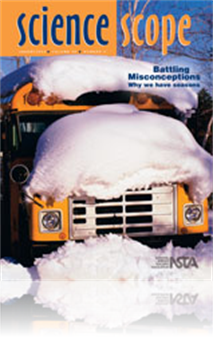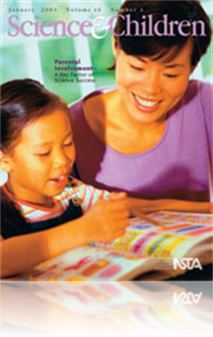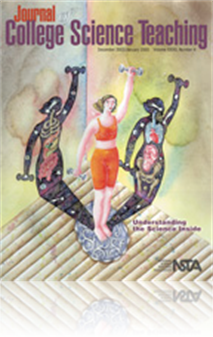All Resources
Journal Article
Science Sampler: Why we have seasons and other common misconceptions
The video, A Private Universe, engages students in the ideas regarding alternative conceptions. This video is effective in capturing preservice teachers’ attention and altering their own beliefs regarding alternative conceptions, especially as they...
Journal Article
Science Is for the Birds: Promoting Standards-Based Learning Through Backyard Birdwatching
Backyard bird watching can be a means for promoting authentic research projects in middle level science. Cornell University's Project FeederWatch provides research protocols for measuring diversity, distribution, and abundance of feeder birds. Sugges...
Journal Article
Tech Trek: Layers of Information—Geographic Information Systems (GIS)
Geographic Information Systems (GIS) are powerful technological tools that can enrich science teaching. This technology can help students analyze data in visual forms to develop a richer understanding of geography, Earth science, physics, and biology...
Journal Article
The Home Zone: Get Familiar with Fingerprints
Welcome to The Home Zone, Science and Children’s new column that presents simple everyday science activities for children and their families to do together. We hope you’ll find the activities a fun and easy way to spend quality time with your chi...
Journal Article
Lab Check 1...2...3: Helping students write clear and concise laboratory reports
Students sometimes struggle to write clear and concise lab reports. The checklist in this article provides students with a clearer understanding of what to include in a lab report. ...
Journal Article
After the Bell: Bringing the Outside In—Insects and their galls
Gall systems are excellent tools for teaching biology. They demonstrate important concepts such as genetic control, plant and animal development, species interactions, biodiversity, and the flow of energy through the food web. Galls, and the animals ...
Journal Article
Middle level students are in a concrete stage of psychosocial development and often have difficulty comprehending something as abstract as atomic structure. Students may simply memorize and "brain dump" information about atoms instead of truly inter...
Journal Article
Editor's Corner: Why Math in Science Class?
The Science Teacher’s editor shares thoughts on the current issue and the major role science teachers play in how students learn and use math skills....
Journal Article
Biocrimes 411: Helping students understand the basics of biocrimes
Teachers can refocus classroom activities involving bacteria and viruses to introduce the topic of biocrimes. This article focuses on linking biological warfare issues to key concepts that students must learn to become scientifically literate. Studen...
Journal Article
Science Sampler: Mission Possible—Students reading in the science classroom
Helping students read expository text through the use of questioning strategies can have powerful rewards. Teacher-generated questions help students learn how to effectively locate answers in a text and give them a purpose for reading. Student-genera...
Journal Article
A Sense of Scale: Studying how scale affects systems and organisms
The concept of scale is central to many science disciplines. The authors share activities focusing on the importance of scale and its effects. ...
Journal Article
While models and analogies are integral to both the learning and practice of science, their use is complex and potentially troublesome. Misconceptions can arise when parts of a model are misleading, missing, or misapplied. Students begin to look crit...
Journal Article
Scope on the Skies: The brightest stars in the sky
What makes some stars brighter than others? Interestingly, there is a relationship between the color of a star, its temperature, and its brightness. The temperature of a star determines its surface color and luminosity (the star’s actual output of ...
Journal Article
Connecting Algebra & Chemistry: Creating a combined math and science course
A teacher makes interdepartmental connections between the science and math departments as a step toward creating a combined science and math course. This is an important step toward reaching the primary goal—helping students succeed in both subject...
Journal Article
Science 101: How do snowflakes form?
A meteorologist explains how and why snowflakes develop and defines other forms of precipitation—sleet, freezing rain, and hail....
Journal Article
The Idea Bank provides tips and techniques for creative teaching, in about 1,000 words. In this month’s Idea Bank, the lesson plan integrates several scientific disciplines and can be used in a range of science courses. Students see candles all the...
Journal Article
A Matter of Taste: Investigating sensory modalities in the protozoan <i>Paramecium</i>
Scientists have always searched for good "model" systems to study the major sensory modalities—vision, hearing, touch, taste, and smell. This article casts the spotlight on an ideal organism for studying many of these sensory modalities—the unice...
Journal Article
To teach writing to science students, we designed a collaborative learning community linking students in biology and English courses in author-editor relationships. This article describes the project to date: theoretical background, pedagogy, process...







